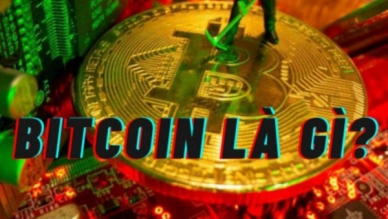In a market characterized by large price volatility, it's necessary to have a currency to stabilize prices, hence, stablecoin was created. So, what is a Stablecoin?
I. What is Stablecoin?
Stablecoin is a type of cryptocurrency with a fixed price compared to other assets such as gold, fiat money, or other cryptocurrencies.
Stablecoin has the following characteristics:
- Price stability
- Scalability
- High security
- Decentralization
Every cryptocurrency on the market is subject to price fluctuations, but Stablecoin is less affected. Thus, Stablecoin was designed to address the most significant issue in the cryptocurrency market - large fluctuations. Stablecoin can be considered a safe haven asset for investors during market volatility.
II. Categories of Stablecoin
Currently, there are three main types of Stablecoin in the market:
- Fiat-collateralized Stablecoin
- Crypto-collateralized Stablecoin
- Non-collateralized Stablecoin
1. Fiat-collateralized Stablecoin
This type of Stablecoin is backed by fiat currency, held in reserve by an intermediary. It is the most common type of Stablecoin directly supported by fiat currency at a 1:1 ratio.
Such Stablecoin is issued by credible and trustworthy entities holding substantial fiat reserves. For instance, if Tether has 2.2 billion dollars, they can issue 2.2 billion tokens into the cryptocurrency market. Token holders can freely trade or exchange them for USD equivalent to their holdings.
The risk with this type of Stablecoin lies in the issuer's credibility and whether they hold the corresponding fiat reserve. However, this type of Stablecoin boasts price stability, insulating it from any cryptocurrency market fluctuations due to its guaranteed fiat reserve.
Examples of this type of Stablecoin include USDT, BUSD, BGBP, etc.
2. Crypto-collateralized Stablecoin
This type of Stablecoin is backed by other cryptocurrencies instead of fiat. Similar to the fiat-collateralized type but the difference lies in using cryptocurrency as collateral.
However, considering cryptocurrencies' high volatility, how can cryptocurrency serve as reliable collateral? The answer is to increase the collateral amount, usually at a 2:1 ratio, meaning $1 of Stablecoin is backed by $2 of cryptocurrency. Essentially, holding $1 of such Stablecoin means owning $2 worth of another cryptocurrency.
The risk with this type of Stablecoin is potential liquidation if the collateral's value falls too low. All processes are automated and decentralized through Blockchain technology.
Popular examples of this type include BitUSD, DAI, etc.
3. Non-collateralized Stablecoin
This Stablecoin type isn't backed by fiat or cryptocurrency. Instead, it relies entirely on algorithms and smart contracts to manage the supply of issued tokens.
Fundamentally, non-collateralized Stablecoin stabilizes price through supply and demand regulation. The system automatically reduces Stablecoin supply if its price falls below that of the fiat currency it's pegged to. Conversely, if the price exceeds the fiat value, more Stablecoin will be circulated to decrease its value.
Examples include Basis, Kowala, Carbon, and Fragments.
III. Advantages and Disadvantages of Stablecoin
1. Advantages
Borderless Payments
Stablecoin transactions don’t require banks or national intermediaries as they operate on Blockchain technology.
Low Cost
Transactions are direct without intermediaries, reducing costs to nearly zero.
Faster Transactions
Blockchain transactions are significantly faster than traditional ones as they eliminate intermediaries and waiting time.
Transparency
Blockchain transactions are public. Anyone can view and track transactions even if they aren’t the ones conducting them, unlike traditional transactions.
Price Stability with Lower Risk
With Stablecoin’s stability, it's a preferable option for transactions over other cryptocurrencies. It also helps investors preserve capital in the volatile cryptocurrency market.
2. Disadvantages
Centralization
Currently, most Stablecoins (except for DAI) are controlled by an organization, contrary to the decentralized nature of cryptocurrencies.
Dependent on Traditional Financial Markets
Most Stablecoins are guaranteed by fiat currency, making their value dependent on fiat currencies and thus the global economy and inflation.
Lack of Regulation
Like all cryptocurrencies, Stablecoin also faces regulatory challenges. There's a long way for Stablecoin to evolve to function as a mainstream transaction medium.
IV. The Potential of Stablecoin
With price stability, fast transactions, transparency, and low transaction costs, Stablecoin could act as a bridge between the cryptocurrency and traditional financial markets.
Currently, cryptocurrency and traditional financial markets exist in parallel with limited interaction. However, with the presence of Stablecoin, it's possible that cryptocurrency will see increased usage in lending and credit markets, areas currently dominated by government-issued fiat currencies.
Submit feedback
Your email address will not be made public. Fields marked are required *
Search
Trend
-
The most commonly used HTML tags
02-01-2020 . 11k view
-
Websites for earning money at home by typing documents
05-17-2023 . 9k view
-
Earn money by answering surveys with Toluna
01-12-2020 . 7k view
-
Guide to creating a database in phpMyAdmin XAMPP
04-25-2020 . 4k view
















0 feedback